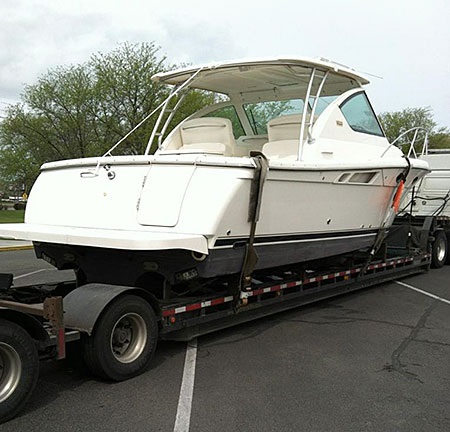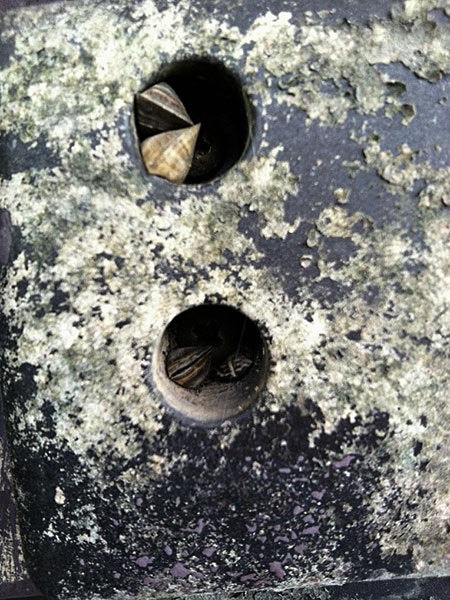 Oregon Department of Fish and Wildlife technicians today discovered Zebra mussels on a boat at the Ontario boat inspection station. The boat being hauled from Lake Erie in Ohio is the first vessel of the 2015 inspection season found to be infested with the invasive mussels. The station opened in March.
Oregon Department of Fish and Wildlife technicians today discovered Zebra mussels on a boat at the Ontario boat inspection station. The boat being hauled from Lake Erie in Ohio is the first vessel of the 2015 inspection season found to be infested with the invasive mussels. The station opened in March.
The commercial driver hauling the Ohio watercraft pulled in for inspection. Motorists hauling boats in Oregon are required to stop at inspection stations to have their watercraft checked for aquatic invasive species under a 2011 Oregon law. Failure to stop at an inspection station could result in a $110 fine.
The boat had a moderate number of adult Zebra mussels around the propeller shaft and under the stern in the drain plug area. It was decontaminated at the inspection station with high-pressure and hot water.

“The driver did the right thing by pulling over to have the boat inspected. Boat owners need to always practice ‘Clean, Drain, Dry’ before launching their boat to keep invasive mussels and other aquatic invasive species out of Oregon and the Pacific Northwest,” said Rick Boatner, ODFW Invasive Species Coordinator. “Zebra and Quagga mussels have caused billions in economic damage around the U.S. and we don’t want to have the same kinds of problems they create here in the Pacific Northwest.”
According to the Columbia Basin Bulletin,the Pacific Northwest, including Alaska and the Canadian provinces of British Columbia and Alberta, is the “only place on the continent” unaffected by the Zebra and Quagga mussel invasions that have devastated ecosystems and local economies. The U.S. Geological Survey has a Quagga and Zebra mussel distribution map on its website.

In addition to Quagga and Zebra mussels, inspectors are looking for aquatic plants and New Zealand mudsnails
“Clean, Drain, Dry”
Clean the boat completely, pulling off any plant material, animals or mud.
Drain – completely drain any areas that could hold standing water by pulling all drain plugs.
Dry – allow the boat to dry before launching again.
